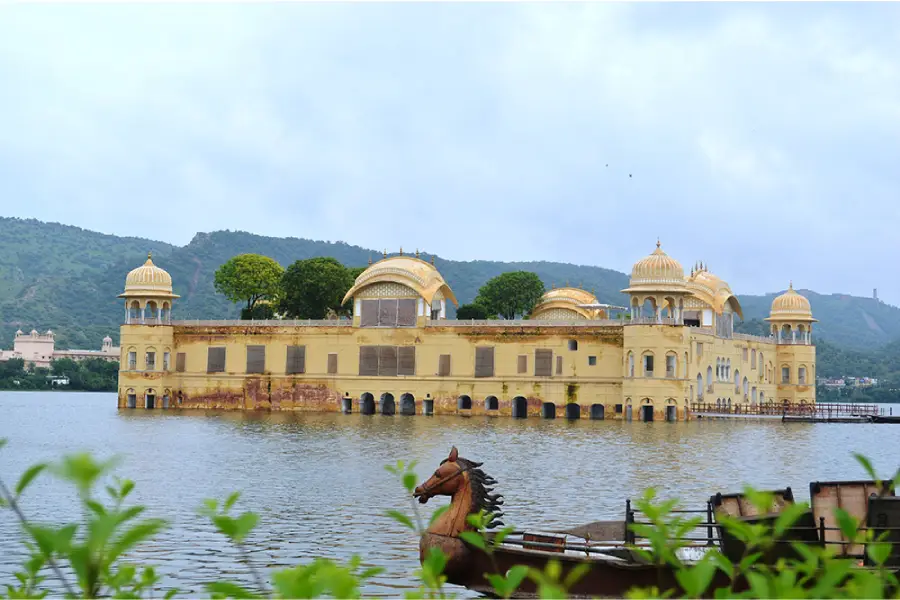Full-Day Jaipur City Tour – Private

Full-Day Jaipur City Tour - Private
- Skip The Line
- Duration : 7 hours (approx.)
- Free cancellation
- Instant confirmation
- Private Tour
Overview
This Jaipur city tour includes visit to Panna Meena Ka kund – A Step well, Amber Fort, Jal Mahal, City Palace, Jantar Mantar and Hawa Mahal, Patrika Gate, Bapu Bazar – Local Market (optional) Plus there are various options available in this tour.
| No. of Persons | Adult Price in USD | Child Price in USD |
|---|---|---|
| 1 | 130 $ | 50 $ |
| 2 | 130 $ | 50 $ |
| 3 | 130 $ | 50 $ |
| 4 | 130 $ | 50 $ |
| 5 | 130 $ | 50 $ |
| 6 | 130 $ | 50 $ |
| 7 | 130 $ | 50 $ |
| 8 | 130 $ | 50 $ |
| 9 | 130 $ | 50 $ |
| 10 | 130 $ | 50 $ |
itinerary
Your Guide and Driver will pickup you up from your Hotel, Airport, Railway Station or any desired location in Jaipur, then proceed for Jaipur city tour.
Amer is a town with an area of 4 square kilometres (1.5 sq mi) located 11 kilometres (6.8 mi) from Jaipur, the capital of Rajasthan. Located high on a hill, it is the principal tourist attraction in Jaipur. The town of Amer was originally built by Meenas and later it was ruled by Raja Man Singh I. Amer Fort is known for its artistic style elements. With its large ramparts and series of gates and cobbled paths, the fort overlooks Maota Lake, which is the main source of water for the Amer Palace. Mughal architecture greatly influenced the architectural style of several buildings of the fort. Constructed of red sandstone and marble, the attractive, opulent palace is laid out on four levels, each with a courtyard. It consists of the Diwan-e-Aam, or “Hall of Public Audience”, the Diwan-e-Khas, or “Hall of Private Audience”, the Sheesh Mahal (mirror palace), or Jai Mandir, and the Sukh Niwas where a cool climate is artificially created by winds that blow over a water cascade within the palace.
al Mahal (meaning “Water Palace”) is a palace in the middle of the Man Sagar Lake in Jaipur city. The palace and the lake around it were enovated and enlarged in the 18th century by Maharaja Jai Singh II of Amber. The Jal Mahal palace is an architectural showcase of the Rajput style of architecture (common in Rajasthan) on a grand scale. The building has a picturesque view of the lake itself but owing to its seclusion from land is equally the focus of a viewpoint from the Man Sagar Dam on the eastern side of the lake in front of the backdrop of the surrounding Nahargarh (“tiger-abode”) hills.
The City Palace, Jaipur was established at the same time as the city of Jaipur, by Maharaja Sawai Jai Singh II, who moved his court to Jaipur from Amber, in 1727. The palace complex lies in the heart of Jaipur city, to the northeast of the very centre. The site for the palace was located on the site of a royal hunting lodge on a plain land encircled by a rocky hill range, five miles south of Amber (city). The history of the city palace is closely linked with the history of Jaipur city and its rulers, starting with Maharaja Sawai Jai Singh II who ruled from 1699 to 1744. He is credited with initiating construction of the city complex by building the outer wall of the complex spreading over many acres.
The Jantar Mantar is a collection of nineteen architectural astronomical instruments built by the Rajput king Sawai Jai Singh II, the founder of Jaipur, Rajasthan. The monument was completed in 1734. It features the world’s largest stone sundial, and is a UNESCO World Heritage site.
Hawa Mahal is a palace in Jaipur, India. Made with the red and pink sandstone, the palace sits on the edge of the City Palace, Jaipur, and extends to the Zenana, or women’s chambers. The structure was built in 1799 by Maharaja Sawai Pratap Singh, the grandson of Sawai Jai Singh, who was the founder of Jaipur.
Local Market, Bapu Bazar is known for all the traditional outfits, handicrafts, antiques, footwear, jewelry pieces and beautiful decorative items. – During Jaipur city tour you will get time for Lunch. – After Jaipur city tour you will be dropped off at Your Hotel, Airport, Railway Station or any desired location in Jaipur.
